Novel Patent Pending Approach to Healthy Aging
While selective clearance of senescent cells by senolytic drugs has been postulated as a potential therapeutic option for a number of age-related diseases, only dasatinib with quercetin and fisetin have met the rigorous criteria set forth for senolytic drug classification. Two of the three compounds, fisetin and quercetin, are naturally occurring flavonoids and have a rather unique constitution when it comes to cellular senescence.
Although the beneficial health effects of fisetin and quercetin are usually linked to their antioxidant properties, there is substantial evidence that its prooxidant features are also relevant and the generation of reactive oxygen species (ROS) by quercetin in the presence of zombie cells could also be a desired biological property. Fisetin actually exhibits a greater level of senolytic activity whereas quercetin’s impact on senescent cells, in the presence of copper and iron, is amplified when fisetin’s impact is not. And therein lies a possible mechanism of action for these two flavonoids; as senescent cells accumulate high levels of copper and iron, and the selective mechanism of both quercetin or fisetin is most likely associated with copper/iron-promoted oxidative damage. Copper and iron dramatically enhanced the prooxidant effects of the flavonoid, epigallocatechin-3-gallate as well. This copper and iron oxidation mechanism has been demonstrated solely in animal models thus far, but provides a promising pathway and justification for the application of fisetin, quercetin and EGCG as primary aging support.
The Senolytic Cleanse
The intent for this two step process is to provide support at the cellular level that is ultimately going to enhance the process involved in the body maintaining a healthy level of cellular senescence without allowing for excess accumulation. Our first step, which is a two week long process, is designed to eliminate the existing senescent cells. We do this by employing the evidence based senolytic compounds at levels that have been studied intensively within our own research lab. This blend has been shown to dramatically reduce senescent cells in white blood cell trials (which were exposed to H2O2, which has been widely used as the most common inducer of stress-induced premature senescence) and, thus, reduce biological age.
Autophagy
During the second step of this process, we then employ a proprietary formulation to ensure the effective ongoing repair and maintenance of damaged cells, a process called 'autophagy'. The second step also includes support by way of MAG-O3™, our proprietary monoglyceride omega 3 fish oil, which in our trials also showed promise for preventing the formation of new senescent cells.
Targeted Nutritional Support & Sustained Therapeutics via Autophagy
Obviously, the idea of supporting autophagy makes sense at every level and thus identifying targeted molecules to accomplish this has been at the forefront of many researchers' work. Many of the naturally occurring molecules have demonstrated promising potential by providing this support. Among the most effective are nicotinamide mononucleotide, luteolin, trans-resveratrol, pterostilbene and monoglyceride omega-3 fatty acids.
NMN
NMN, or nicotinamide mononucleotide, is a molecule known as a precursor to NAD+. And when considering the importance of NAD+ to overall physiology and specifically autophagy, it stands to reason that NMN would be considered an appropriate choice as a targeted nutritional support molecule. NMN has been shown to influence the pathways of mTOR. For example, NMN has demonstrated the ability to protect hypoxic myocardial cells via the activation of autophagy and the modulation of mTOR pathways.
Maiese K. New Insights for nicotinamide: Metabolic disease, autophagy, and mTOR. Front Biosci (Landmark Ed). 2020 Jun 1;25(11):1925-1973.
Luteolin
Luteolin, a flavonoid found in several fruits, vegetables, and herbs, including broccoli, parsley, and thyme, has been found to simultaneously increase AMPK and inhibit mTOR. In addition, luteolin has the potential to affect various signaling molecules involved in the first two steps of the autophagy process including initiation/nucleation and elongation.
Resveratrol
Resveratrol (3,5,4′-trihydroxy-trans-stilbene) belongs to polyphenols’ stilbenoids group found in more than 70 plants, most notably grape seeds and skins. Autophagy activation by resveratrol has been demonstrated in different in vivo and in vitro models. In these models, resveratrol modulates metabolic and mitochondrial function, promotes neural regeneration, and restores neural function through specific signaling pathways. The protective functions of resveratrol have been associated with regulation of metabolic sensors/effectors including mTOR, the adenosine-5-monophosphate-activated protein kinase (AMPK), and, uniquely, Sirtuin 1 (SIRT1). Resveratrol directly activates SIRT1 and increases its expression, which may induce autophagy directly by the process of deacetylation, independent of mTOR.
Pterostilbene
Pterostilbene (PT, trans-3,5-dimethoxy-4-hydroxystilbene), also referred to as PT, a chemical classified as a stilbene, can be found in many foods and herbs such as blueberries, grapes. Because of the presence of two methoxy groups, PT exhibits better bioavailability, more lipophilicity, as well as the higher cellular uptake and a longer half-life than its analog resveratrol. One area of particular interest relative to PT downregulates NLRP3 inflammasome activation through autophagy induction, AMPK, and mTOR signaling pathways. (Wang YJ, Chen YY,et al. Induction of Autophagy by Pterostilbene Contributes to the Prevention of Renal Fibrosis via Attenuating NLRP3 Inflammasome Activation and Epithelial-Mesenchymal Transition. Front Cell Dev Biol. 2020 Jun 3;8:436.) NLRP3 inflammasome activation plays a key role in many inflammatory diseases such as IBD, CKD and has been implicated in stimulating amyloid beta induced neuroinflammation.
Despite the well documented and far reaching impact that omega-3 fatty acids have on physiology, one area that they have not been widely known for is aging support via autophagy. However, published data in the Journal of Neuroinflammation indicates that, in fact, attenuation of TBI via enhancement of autophagy can be directly attributed to omega-3 PUFA supplementation. It was found that treatment with omega-3 PUFA significantly increased the NAD+/NADH ratio and SIRT1 activity following TBI. This led to the inhibition of neuronal apoptosis and to neuroprotective effects via the enhancement of autophagy after TBI. This was thought to be possibly due to elevated SIRT1, perhaps a similar mechanism as resveratrol.
Click here to learn more about EB Supplements Patent Pending Senolytic Approach to Heathy Aging.
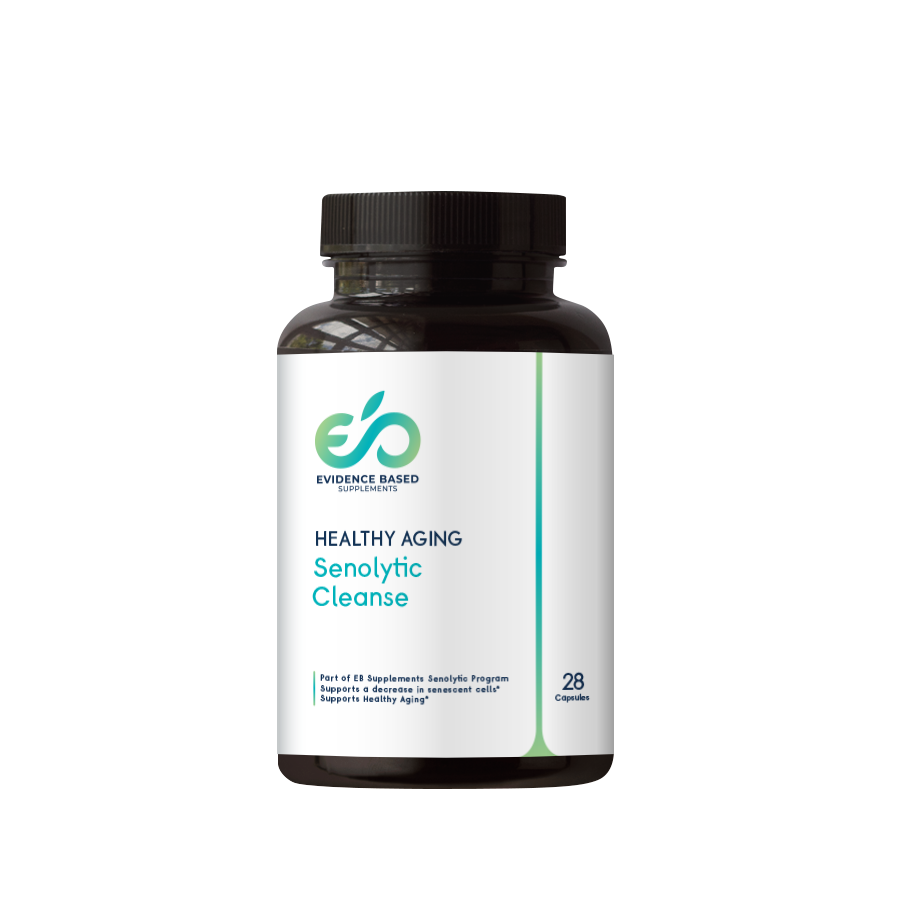
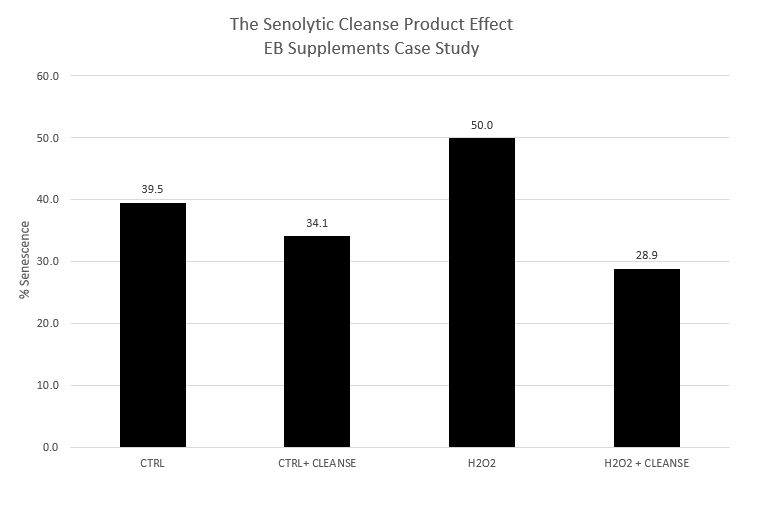
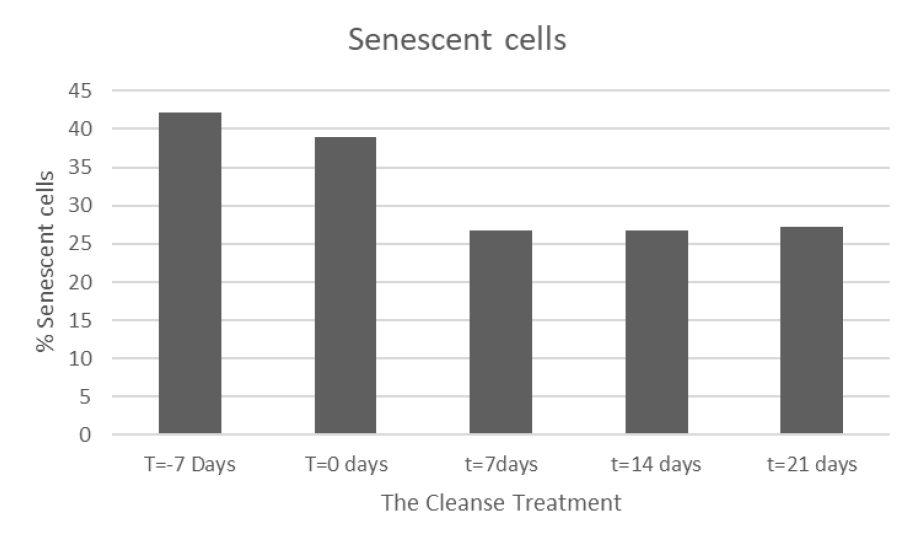
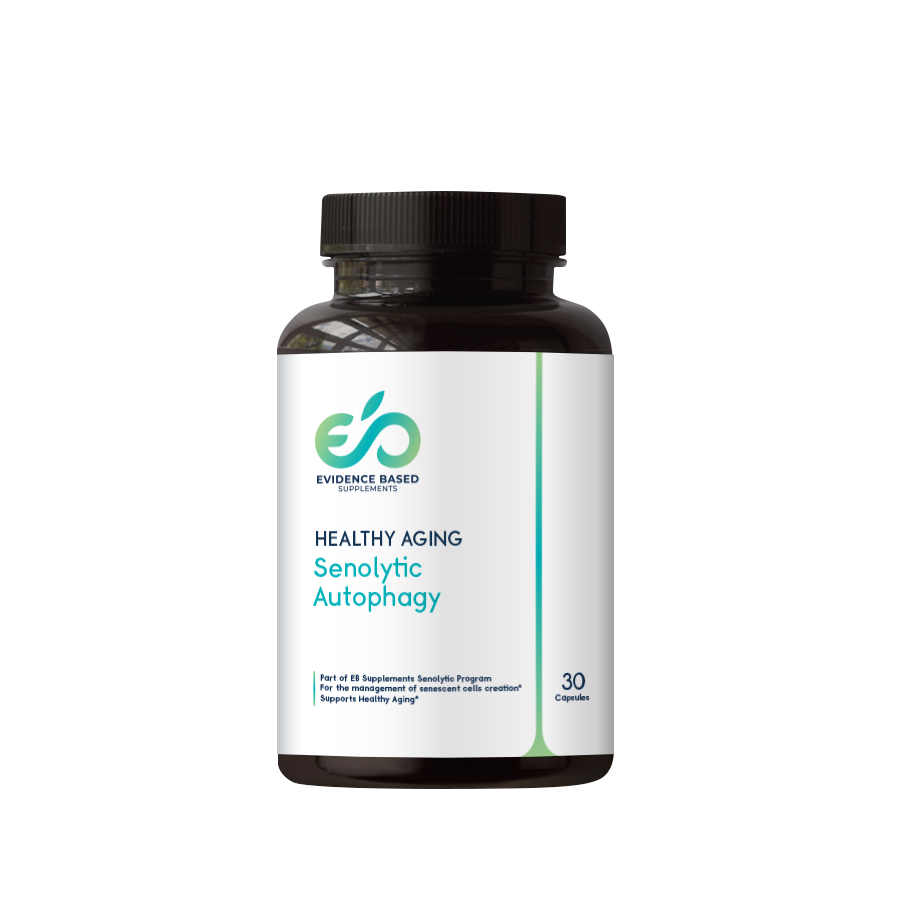
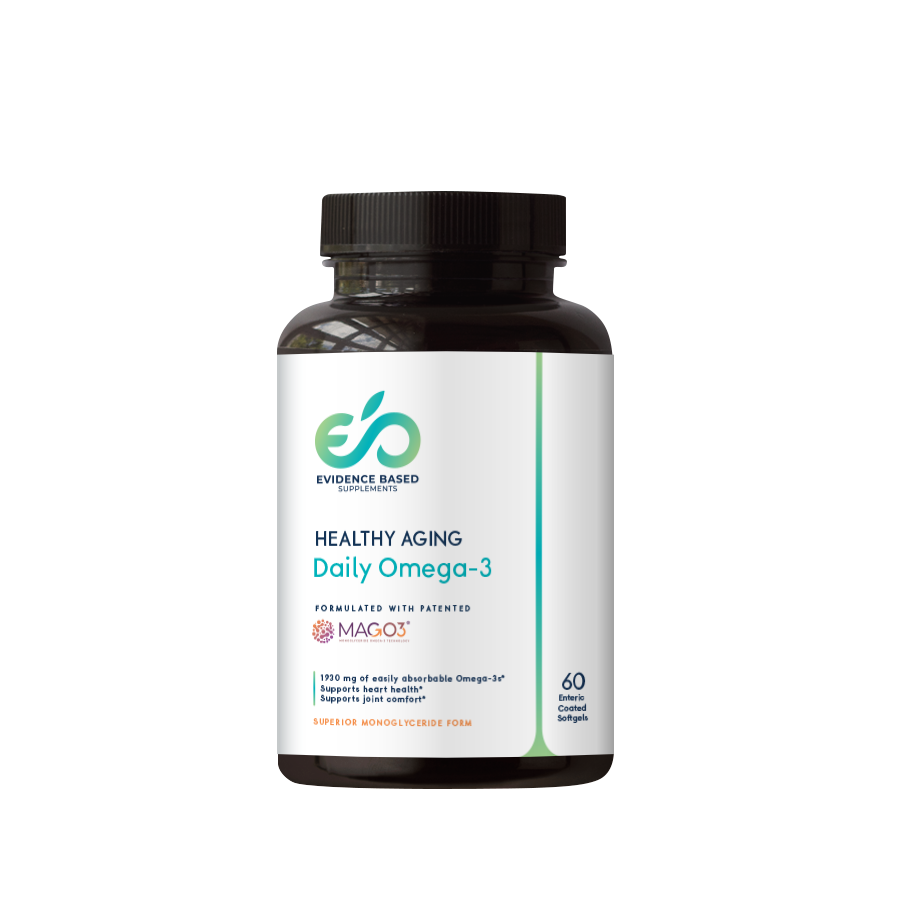

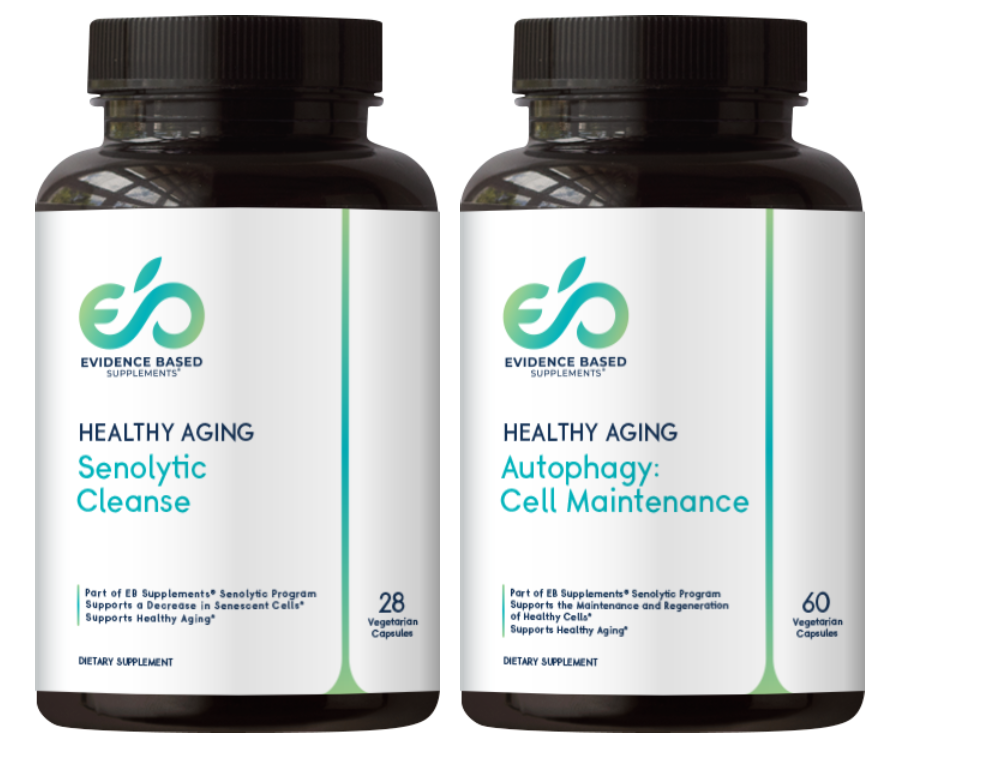
EB Supplements™ Senolytic Program